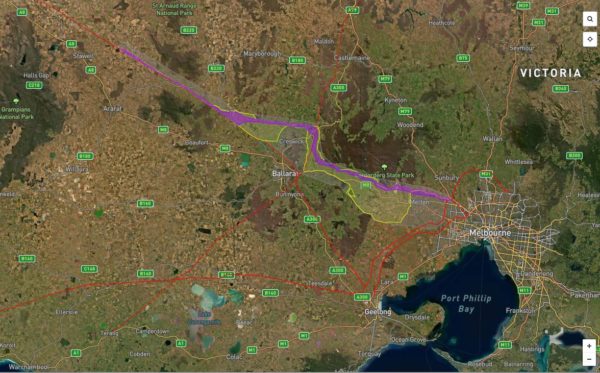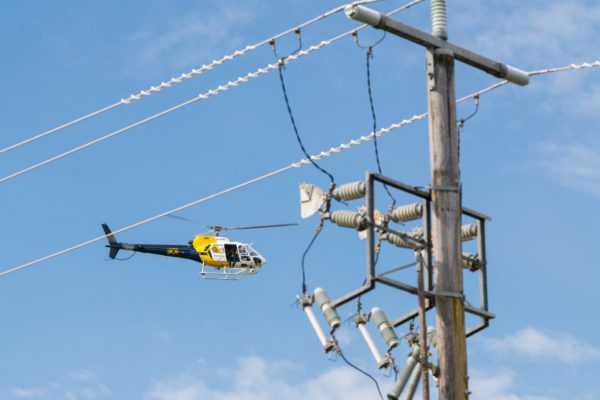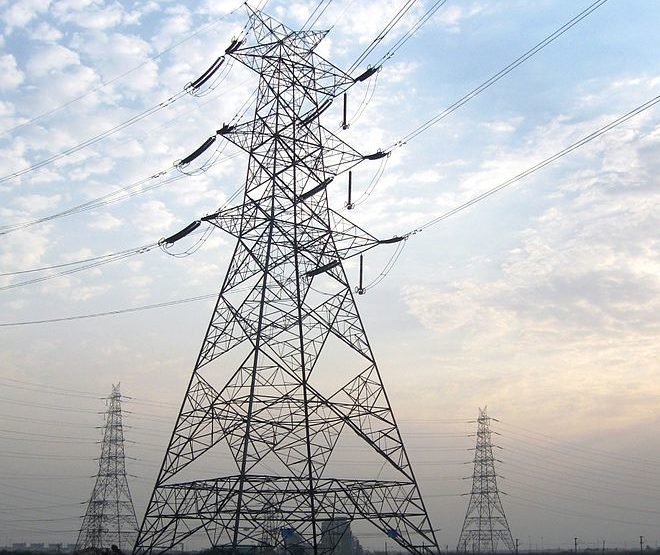AusNet has unveiled a single corridor for the proposed Western Victoria Transmission Network Project, declaring the project has positioned western Victoria one step closer to becoming the state’s renewable energy powerhouse.
The Western Victoria Transmission Network Project (WVTNP) proposes the construction of a new transmission line starting at Bulgana, near Stawell in Victoria’s west, and stretching approximately 190km to Sydenham in Melbourne’s north-west.
A new overhead double circuit 220 kV line would connect the existing Bulgana Terminal Station to a new terminal station to be built north of Ballarat while a double circuit 500 kV high-voltage line would connect from there to a new terminal station at Sydenham.
AusNet said the project, to be delivered by its commercial arm Mondo, would enable the connection of new renewable energy generated in western Victoria into the National Electricity Market and increase the Victorian transmission capacity.
About 4 GW of wind and solar projects have already been constructed in western Victoria and AusNet said in a statement on Wednesday the new transmission link has the potential to unlock another 900 MW of renewables in the region.
While western Victoria has emerged as a hotbed of renewables development, it has also become notorious for grid limitations with a number of utility-scale solar and wind farms in the area having had their outputs downgraded through Marginal Loss Factors, resulting in major dents in revenues.

Image: AusNet
AusNet executive project director Stephanie McGregor said the new transmission line, the first major transmission infrastructure built in Victoria for more than three decades, is urgently needed to ensure solar and wind energy being produced in the state’s west can enter the grid as the state transitions from coal-generated electricity to renewables.
“Once built the Western Victoria Transmission Network Project is expected to deliver substantial benefits to electricity consumers and the region over the life of the project,” she said.
“Transmission upgrades are a major step toward enabling the potential of Australia’s green energy boom, [and] this project is a major piece of the puzzle to facilitate that in Victoria.”
The project, which is included as a “committed” project in the Australian Energy Market Operator’s blueprint for the future grid, the Integrated System Plan, would complement other transmission projects such as the proposed new Victoria-NSW interconnector, VNI West.
Construction is expected to commence sometime in 2022, and the transmission link is expected to be fully operational by 2025. AusNet said the new transmission line would create more than 300 jobs during construction.

Image: AusNet
While AusNet has now identified a single corridor, considered to be the least constrained, the network operator will continue investigations, including undertaking flyover surveys between July 5-9 to capture light detection and ranging (LiDAR) data and aerial imagery, to determine the placement of the proposed transmission line within that corridor.
AusNet said it will also continue to consult with community with the project attracting some opposition, with concerns the construction of overhead transmission lines will impact existing agricultural activities.
McGregor acknowledged the feedback and input from landholders and communities but said the selection of the corridor takes into consideration the location of private residences, the surrounding landscape, the environment, cultural significance and the agricultural use of land.
With the required Environment Effects Statement yet to be completed, McGregor said AusNet would continue to work with the landholders themselves to ensure agriculture and other land use can continue along the line with minimal disruption.
“We absolutely acknowledge and understand the uncertainty around the issue of farming under potential transmission lines,” she said.
“Ongoing engagement continues to be our priority. As the EES progresses there will be many opportunities for landowners and the community to provide further input as the process continues.”
This content is protected by copyright and may not be reused. If you want to cooperate with us and would like to reuse some of our content, please contact: editors@pv-magazine.com.









By submitting this form you agree to pv magazine using your data for the purposes of publishing your comment.
Your personal data will only be disclosed or otherwise transmitted to third parties for the purposes of spam filtering or if this is necessary for technical maintenance of the website. Any other transfer to third parties will not take place unless this is justified on the basis of applicable data protection regulations or if pv magazine is legally obliged to do so.
You may revoke this consent at any time with effect for the future, in which case your personal data will be deleted immediately. Otherwise, your data will be deleted if pv magazine has processed your request or the purpose of data storage is fulfilled.
Further information on data privacy can be found in our Data Protection Policy.